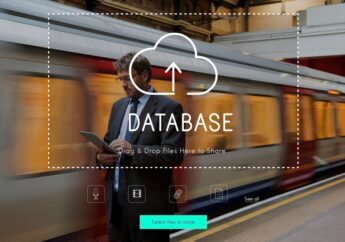Agile Access For Software Development Teams: Fueling Innovation
by Deepanwita Dey Technology Published on: 24 November 2023 Last Updated on: 18 December 2023

Agile is changing how software is made in big ways. Before Agile, teams used a waterfall development approach. They moved step-by-step from planning to building to testing. However, this could have been faster. Teams only saw results at the end.
Now, with Agile, work is broken into small pieces. Teams plan, build, and rapidly test small chunks. After each chunk, they receive feedback from users. Then, they improve the next chunk.
With Agile, customers see results way quicker. Teams can change direction fast, too, if users want new features.
Agile enhances the flexibility of software teams. They can adapt to change more easily. Teams are faster because they do frequent delivery. They stay focused on users through constant feedback.
Agile roles like Scrum Master help teams work together better. Daily standups improve communication. Retrospectives help teams improve.
For development teams, it makes tasks like setting up user provisioning software a lot more streamlined. It fixes big issues with waterfall development. Agile helps teams be faster, more flexible and focused on customer needs. It is changing software in ways nobody imagined before.
Embracing Agile For Better Innovation
The Agile Manifesto, created in 2001, was a huge step forward in software dev. With a focus on people over processes and customer teamwork over rigid contracts, Agile challenged old thinking. Teams did not have to do sequential dev and delays anymore. The Manifesto introduced methods like Scrum, which thrives on continuous feedback, incremental improvements, and teamwork across various roles.
Agile Access encompasses practices that streamline the journey from software development to release. Instead of delayed staging and long testing times, Agile Access relies on automation, continuous integration, and delivery to expedite the provisioning process.
However, Agile is more than just a new approach; it fosters innovation. Per the 2022 State of Agile Report, high-performing Agile teams are people-focused. 89% say strong leadership support is key to success.
By empowering people and prioritizing customer needs, Agile transforms team dynamics and unlocks creative potential. Spotify and Google dev teams champion Agile values to quickly prototype and deliver innovative features. Their success shows Agile works well to create flat teams where ideas flow freely.
Agile Access: Significance For Efficient Provisioning
This efficient provisioning is critical for meeting business goals. A 2022 report shows that 47% of teams measure success by on-time delivery. 44% look at business goals met.
By using test automation, progressive delivery pipelines, and DevOps teamwork, Agile Access shrinks provisioning from months to weeks or days. For example, Etsy and Amazon deploy code hourly to respond fast to customer feedback.
Agile Access relies on practices like:
- Continuous integration – merging code into a shared repo often
- Continuous delivery – automating releases to users
- Infrastructure as code – managing infrastructure with code
- Monitoring – tracking performance to find issues
These processes enable the frequent and reliable release of software.
Advanced Agile Practices In Software Development for Dev Teams
To fully leverage Agile Access benefits, teams must master advanced practices that optimize dev. The 2022 report found for 52% of companies, faster time-to-market was the top priority. Meanwhile, 44% viewed predictable delivery as critical, and 31% focused on risk reduction.
Pair Programming
Pair programming is an Agile practice where two developers work together on code at one station. One person writes code while the other reviews each line and offers input.
The Pairs frequently switch roles, yielding several benefits:
- Fewer bugs – two people catch more mistakes
- Knowledge sharing – developers learn from each other
- Fast problem solving – two minds work better than one
Studies show that pair programming enhances software quality without consuming additional time. The code reviews happen as the work is written.
Code Reviews
Developers inspect new code changes as a team in code reviews before merging to the main branch. This provides:
- Accountability – developers defend their code to peers
- Knowledge sharing – developers see techniques used by others
- Error detection – reviewers often find bugs, security issues, etc.
Code reviews promote discussion and learning. Team standards improve because reviewers enforce best practices.
Behavior-Driven Development (BDD): Integral To Software Development
Behavior-driven development (BDD) centers test cases around expected user outcomes. By writing plain language tests before coding, teams align dev with business needs. A 2018 survey showed that 73% of Agile teams gained value from BDD, with 54% experiencing faster feedback loops. Addressing Common Barriers to Adopting Agile Access.
The path to optimized Agile Access faces roadblocks. Resistance to change, lack of leadership support, and separated teams can all hurt progress. The State of Agile report shows nearly 40% said not enough leadership support was a top barrier.
Addressing Resistance To Change
Moving from waterfall to Agile requires teams to abandon the tools and practices they’re used to. Leaders must communicate the benefits of change while allowing time for new processes to become solid.
Integrating Non-Technical Stakeholders
Product managers, UX designers, and business execs provide key insights for Agile teams. Leaving them out of the loop during the provisioning stages isolates important views. Working together across teams is essential.
Measuring The Impact Of Agile Access
Key performance indicators (KPIs) are key for quantifying the outcomes of optimized Agile Access. Here are some metrics teams should track:
- Lead time from committing to deploying
- Release frequency
- Time to restore service after incidents
- Number of production defects
These measurable metrics offer insight into provisioning efficiency. If bottlenecks occur, the data also improves continuous efforts.
Agile Access In Distributed Teams
Globally distributed teams face extra challenges in coordinating Agile Access. Without together colleagues for spontaneous talks, communication breakdowns can easily happen. Tools like Slack, Zoom, and Miro enable real-time teamwork across locations.
Slack is a collaboration platform that empowers software development teams by facilitating efficient communication and integration with essential tools. Customization options, threaded conversations, status updates, and analytics further enhance productivity, fostering innovation in software development.
Still, managers must work to build personal connections through team gatherings, one-on-ones, and frequent informal check-ins. This grows the trust needed for efficient Agile Access.
Future Trends In Agile Access
As Agile adoption grows, new frameworks like the Scaled Agile Framework (SAFe) are emerging to support large, complex projects. SAFe provides coordination across multiple Agile teams to speed up provisioning. They assist in software development.
Meanwhile, predictive analytics uses data to forecast outcomes and reduce risks. By utilizing metrics related to lead time, velocity, and quality, predictive models guide Agile planning and decision-making to improve provisioning efficiency.
Faqs: Addressing Questions And Concerns
How does Agile Access improve the efficiency of software teams?
By relying on continuous delivery, test automation, and DevOps, Agile Access shortens provisioning from months to days/hours. This speeds up time-to-market while enabling quick adaptation to customer feedback.
What are the challenges in implementing Agile Access across departments?
Cross-department alignment is vital but tough. Having execs stress the importance of Agile Access helps gain buy-in. Meanwhile, breaking down silos through training and working together on incentives brings departments together.
Can Agile Access scale for large enterprises, and if so, how?
Yes, frameworks like SAFe allow Agile Access to scale across large portfolios. Multiple Agile teams are coordinated through release trains and roadmaps. Program managers oversee while empowering team autonomy.
Bottom Line
Agile Access is key for software teams aiming for innovation through efficient provisioning. By using Agile practices, encouraging teamwork, and tracking meaningful metrics, dev teams can maximize quality and speed up time-to-market.
Agile Access practices like continuous delivery, pair programming, and code reviews help teams maximize quality and speed up time-to-market. This allows them to provision software faster to delight users. Agile Access enables responsive software
Leadership support and partnerships across teams are essential. Ultimately, Agile Access facilitates responsive software provisioning that delights demanding customers.
Read Also:







































































































